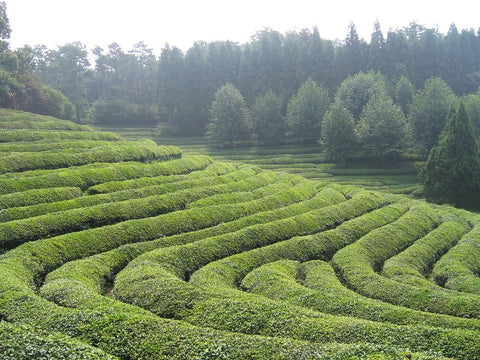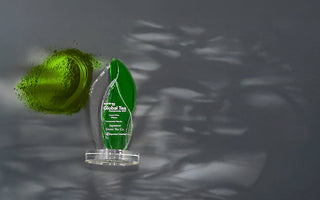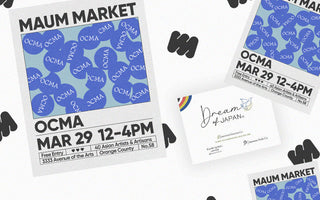Video Transcript in Chinese: 日本綠茶比對中國綠茶 你不想錯過的10場戰役
This article was posted back in 2017, but since it was popular, we made videos out of it. Watch the video and enjoy the original article below!
Original Blog Post
Chinese green tea and Japanese green tea both come from the same plant, Camellia sinensis. However, in many ways, the similarities stop there. From when and how they're processed to the benefits they serve, Chinese green tea and Japanese green tea differ. Which one is "better" is the subject of this battle, comparing each on 10 ranging criteria.
Green tea is a beloved beverage in Japan and China, but did you know the differences between these types go far beyond their origin? From how the tea is processed to its flavour, health benefits, and cultural significance, Japanese and Chinese green teas offer unique experiences. This article explores these distinctions, helping you appreciate what makes each special.
1. History: Chinese Green Tea is the Original Green Tea
Green tea originated some five thousand years ago in China, with the first documented use of it appearing in the 8th century. in the book "The Classic of Tea" by Chinese writer Yu Lu. Over 4,000 years later, in about 800 A.D., green tea migrated outside of China to other parts of the world. It spread first throughout Asia, starting in Japan, where it was brought back from China by Japanese Buddhist monks.

The Classic of Tea written by Lu Yu in 8th century during the Tang Dynasty in China
2. Culture: Japanese Green Tea Helped Forge a Culture
When green tea came to Japan, the people there soon integrated it into their culture. The Japanese turned the drinking of green tea into a formal occasion, developing rituals and rites for its use. What blossomed into the renowned Japanese Tea Ceremony, or chanoyu, elevates the drinking of green tea from merely a personal and social activity to a ceremonial one.

Currently, 5 million people are trained in at least one school of the Japanese Tea ceremony.
3. Aesthetics: Chinese Green Tea Comes in Many Pretty Forms
When Chinese green tea leaves are processed, it is done by hand and can be "sculpted" into many shapes, including being rolled into balls, twisted into spirals, and smoothed into swords. This adds an element of variety and aesthetics to the tea-drinking experience. By contrast, when Japanese green tea is processed, it is done by machine and is either pulverized into a powder, called matcha, or rolled into uniform needle shapes, called sencha. This makes drinking Japanese green tea a less artful and more utilitarian experience.

Kuding tea, Chinese tea which is particularly bitter-tasting used for common cold and headache
4. Health Benefits: Japanese Green Tea Has More Antioxidants
One of the primary health benefits attributed to green tea is its high concentration of immune-enhancing antioxidants. Japanese green tea contains more antioxidants than Chinese green tea, with 60% antioxidants compared with Chinese green tea's 12–16 percent. (Read more about EGCG and antioxidants in my other article.)
Japanese and Chinese green teas are packed with health benefits thanks to their high levels of antioxidants, vitamins, and minerals. However, the type of green tea and how it’s processed can influence its specific benefits.
Japanese green teas, especially matcha, are rich in catechins, an antioxidant known to support heart health, boost metabolism, and aid in weight management. Because matcha is powdered, you consume the entire tea leaf, making it one of the most nutrient-dense teas available.
Chinese green teas are also loaded with antioxidants, but their properties can vary depending on the type. For instance, Longjing promotes calmness and improves digestion, while Biluochun is believed to have anti-inflammatory benefits. Both Japanese and Chinese teas are excellent choices for supporting overall health and wellness.
Sources:
"Japanese vs. Chinese Green Tea" by Stephanie Lee. Livestrong.com. http://www.livestrong.com/article/495604-japanese-vs-chinese-green-tea/
"What's Really in Green Tea Supplements, Brewable Teas, and Bottled Drinks?" ConsumerLabs, December 2012. https://www.consumerlab.com/reviews/Green_Tea_Review_Supplements_and_Bottled/Green_Tea/

EGCG (epigallocatechin-3-gallate) is antioxidants or substances that combat free radicals, which can damage DNA and alter or even kill cells in the body.
Processing Techniques: Steaming vs. Pan-Firing
One key difference between Japanese and Chinese green teas is how they are processed. This step greatly influences the tea's flavour, aroma, and appearance.
In Japan, green tea leaves are steamed immediately after harvesting. This method preserves the leaves' vibrant green colour and gives Japanese teas their signature fresh, grassy flavour. Matcha, for example, is a powdered green tea made from steamed leaves that are finely ground. This method also locks in the tea's umami, a savoury flavour highly prized in Japanese cuisine.
Chinese green tea, by contrast, is typically pan-fried or roasted. This technique gives the leaves a slightly toasty, nutty aroma and a milder flavour. You’ll also notice that Chinese teas often come in unique shapes, like the flat leaves of Longjing (Dragon Well) or the spiral curls of Biluochun. These shapes are created during the drying and rolling, adding a visual appeal to the tea.
Exploring the Flavors of Popular Varieties
The flavours of Japanese and Chinese green teas are as diverse as their processing methods. Let’s take a closer look at some popular varieties from each region:
-
Japanese Green Teas:
-
Matcha: This vibrant green powder is creamy, full-bodied, and sweet. It’s often used in tea ceremonies and popular in lattes and desserts.
-
Sencha: The most common green tea in Japan, Sencha is light, grassy, and refreshing, perfect for everyday sipping.
-
Hojicha: Made by roasting green tea leaves, Hojicha has a nutty, toasty flavour and is low in caffeine, making it great for evenings.
-
Chinese Green Teas:
-
Longjing (Dragon Well): Known for its flat, smooth leaves, Longjing offers a mellow, slightly nutty flavour.
-
Biluochun: With its tightly curled leaves, this tea is floral, delicate, and slightly sweet.
-
Gunpowder: Rolled into tiny pellets, Gunpowder tea has a bold, smoky flavour and pairs well with mint.
By understanding these varieties, you can better appreciate the craftsmanship behind each cup and find the tea that suits your taste.
Brewing and Serving Styles
Brewing green tea is an art form, with unique methods in Japan and China that highlight each tea’s best qualities.
In Japan, matcha is prepared precisely using a bamboo whisk to create a frothy, smooth cup. Sencha and other loose-leaf teas are steeped at lower temperatures (70–80°C) to avoid bitterness and preserve their delicate flavours. The Japanese tea ceremony elevates tea preparation to an art, emphasising mindfulness and attention to detail.
Green tea is often brewed in China using the Gongfu style, which involves short, multiple infusions in a small teapot or gaiwan. This method allows the tea’s flavour to evolve with each brew, offering a layered and immersive experience. The visual beauty of the tea leaves unfurling during the brewing process is also part of the enjoyment.
Understanding these techniques can help you brew green tea like an expert, bringing out its flavour and aroma.
5. Variety: Chinese Green Tea Comes in Thousands of Varieties
Japanese green tea production is dominated by a primary cultivar named Yabukita. As such, the number of varieties of Japanese green tea is limited. Chinese green tea, by contrast, is available in thousands of different varieties, each named for the type of green tea it's said to produce. For a true green tea connoisseur, there's far more to explore in the varieties of Chinese green tea than Japanese green tea.

Chinese tea shop filled with variety of tea types

6. Weight Loss: Japanese Green Tea Increases Metabolism
A type of antioxidant found in green tea, called EGCGs, is known to promote a healthy balance in blood sugar levels. A study reported in the "Journal of Chromatography" in September 2003 found that Japanese green tea contains more than 100 times the levels of EGCGs as does Chinese green tea. In another study, published in "The American Journal of Clinical Nutrition" in December 1999, these EGCGs were also found to increase thermogenesis. This is the process the body uses to metabolize fat in order to increase or maintain body temperature.
Read more about EGCG and green tea in my other article.
Read more about weight loss and green tea in my other article.
Sources:
"Determination of catechins in matcha green tea by micellar electrokinetic chromatography." DJ Weiss and CR Anderton. Journal of Chromatography, September 2003. https://www.ncbi.nlm.nih.gov/pubmed/14518774
"Efficacy of a green tea extract rich in catechin polyphenols and caffeine in increasing 24-h energy expenditure and fat oxidation in humans 1,2,3" AG Dulloo and others. American Journal of Clinical Nutrition, December 1999. http://ajcn.nutrition.org/content/70/6/1040.full

Anti-oxidant Element in Green Tea Helps Break Down Fat
7. Availability: Chinese Green Tea is Everywhere!
China is the world's largest exporter of green tea, producing 80% of the world's supply. By contrast, Japan, producing only 7% and exporting only 1%, grows less green tea than even Indonesia and Vietnam. Therefore, Chinese green tea is far more commonly sold than Japanese green tea, and its prevalence makes it much cheaper. Most of the green tea you see on store shelves and restaurant tables is Chinese green tea. By contrast, Japanese green tea is considered a specialty item and is often only found in boutique shops and on the Internet.
Source:
"Intergovernmental Group on Tea, UN Food and Agriculture Organization." (2012). Current situation and medium-term outlook for tea (p. 16). http://www.fao.org/economic/est/est-commodities/tea/tea-meetings/tea22/en/

Chinese green tea farm - producing 80% of the world's supply
8. Flavor: Japanese Green Tea isn't Fermented
This is a highly subjective criterion for evaluating any food or drink. However, that said, there is at least a minor consensus on a particular distinction of flavor between the two types of green tea. Chinese green tea and Japanese green tea are processed differently. In the processing of Chinese green tea, the leaves become slightly fermented. This is because in processing Chinese green tea, the leaves are stored and then pan-fried, whereas in Japanese green tea, the leaves are steamed immediately after being picked. The storage of tea leaves before processing can produce fermentation that pan-frying alone cannot remove. The processing of tea leaves immediately after being picked, by contrast, precludes the fermentation process from initiating, while steaming would eliminate any anomalous fermentation that may occur preceding this step. For some people, this fermentation produces a slightly tart or sour flavor they may find undesirable. Japanese green tea leaves are not fermented when processed and therefore do not contain this subtle, potentially unwanted, additional flavor. Instead, Japanese green tea tends to taste sweeter than Chinese green tea. (Contrarily, Japanese green tea also contains more chlorophyll, which some green tea drinkers find too "grassy" for their tastes.)

Green Tea Processing equipment used by Arahataen, Japan - Japanese green tea, sencha, is steamed to prevent fermentation

9. Cost: Chinese Green Tea Producers Must Compete For Your Cup
Because of the massive prevalence of Chinese green tea, competitors are forced to maintain low prices in order to sell their product. Therefore, Chinese green tea tends to cost consumers a lot less than Japanese green tea. Likewise, because Japanese green tea is harder to find and mostly only sold online or in specialty shops, it tends to be more expensive than its Chinese counterpart.

Chinese green tea tends to cost consumers a lot less than Japanese green tea
10. Impurities: Japanese Green Tea Contains No Lead
In 2006, a study examining the lead content of green tea found that 32% of Chinese green tea leaves sampled contained more than the approved limit per serving of 2 micrograms of lead. By contrast, none of the Japanese green tea leaves sampled exceeded this lead limit. This is believed to be a consequence of the higher rates of industrial pollution in China than Japan. (To protect yourself from the lead content in Chinese green tea, avoid organic Chinese green tea and Chinese matcha, drink decaffeinated Chinese green tea, or use a filter when you brew it.)
Source:
"Scale and causes of lead contamination in Chinese tea." WY Han and others. Environmental Pollution, January 2006. https://www.ncbi.nlm.nih.gov/pubmed/15998560
None of the Japanese green tea leaves sampled exceeded this lead limit
And the winner is...
It's a draw! 5 to 5. Chinese green tea wins on factors of history, aesthetics, variety, availability, and cost. Japanese green tea wins on factors of culture, health benefits, weight loss, flavor, and impurities. Which green tea you pour into your cup depends on which of these criteria matter most to you. Whichever green tea you choose, may you drink it in good health.
Beyond the Battle - Benefits of Japanese and Chinese Green Tea
Japanese and Chinese green teas are packed with health benefits thanks to their high levels of antioxidants, vitamins, and minerals. However, the type of green tea and how it’s processed can influence its specific benefits.
Japanese green teas, especially matcha, are rich in catechins, an antioxidant known to support heart health, boost metabolism, and aid in weight management. Because matcha is powdered, you consume the entire tea leaf, making it one of the most nutrient-dense teas available.
Chinese green teas are also loaded with antioxidants, but their properties can vary depending on the type. For instance, Longjing promotes calmness and improves digestion, while Biluochun is believed to have anti-inflammatory benefits. Both Japanese and Chinese teas are excellent choices for supporting overall health and wellness.
Conclusion
Brewing green tea is an art form, with unique methods in Japan and China that highlight each tea’s best qualities.
In Japan, matcha is prepared precisely using a bamboo whisk to create a frothy, smooth cup. Sencha and other loose-leaf teas are steeped at lower temperatures (70–80°C) to avoid bitterness and preserve their delicate flavours. The Japanese tea ceremony elevates tea preparation to an art, emphasising mindfulness and attention to detail.
Green tea is often brewed in China using the Gongfu style, which involves short, multiple infusions in a small teapot or gaiwan. This method allows the tea’s flavour to evolve with each brew, offering a layered and immersive experience. The visual beauty of the tea leaves unfurling during the brewing process is also part of the enjoyment.
Understanding these techniques can help you brew green tea like an expert, bringing out its flavour and aroma.
• Disclosure: I only recommend products I would use myself, and all opinions expressed here are my
own. This post may contain affiliate links that I may earn a small commission at no additional cost to you.
The commission also supports us in producing better content when you buy through our site links.
Thanks for your support.
- Kei and Team at Japanese Green Tea Co.
Get Free Bonus Books

Sign up for free to the Green Tea Club to get advice and exclusive articles about how to choose Japanese Tea, and tips, tricks, and recipes for enjoying Japanese tea.
About the author
Kei Nishida
Author, CEO Dream of Japan
Certification: PMP, BS in Computer Science
Education: Western Washington University
Kei Nishida is a passionate Japanese green tea connoisseur, writer, and the founder and CEO of Japanese Green Tea Co., a Dream of Japan Company.
Driven by a deep desire to share the rich flavors of his homeland, he established the only company that sources premium tea grown in nutrient-rich sugarcane soil—earning multiple Global Tea Champion awards.
Expanding his mission of introducing Japan’s finest to the world, Kei pioneered the launch of the first-ever Sumiyaki charcoal-roasted coffee through Japanese Coffee Co. He also brought the artistry of traditional Japanese craftsmanship to the global market by making katana-style handmade knives—crafted by a renowned katana maker—available outside Japan for the first time through Japanese Knife Co.
Kei’s journey continues as he uncovers and shares Japan’s hidden treasures with the world.
Learn more about Kei





Hi Tyler,
Thank you very much for your comment. It is an average and general statistics. I personally buy a lot of Chinese tea. If you look, there are Chinese tea companies that test and care about chemical components. : )
Kei Nishida
What do you mean it’s a draw? The fact that Japanese green tea doesn’t contain high amounts of lead, which is a toxic metal, should make Japanese green tea the obvious winner
I did not know about the lead in Chinese green tea. That alone would lead me to prefer Japanese green tea.